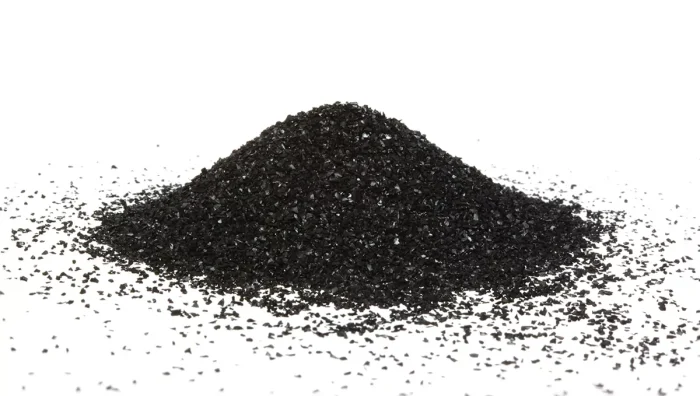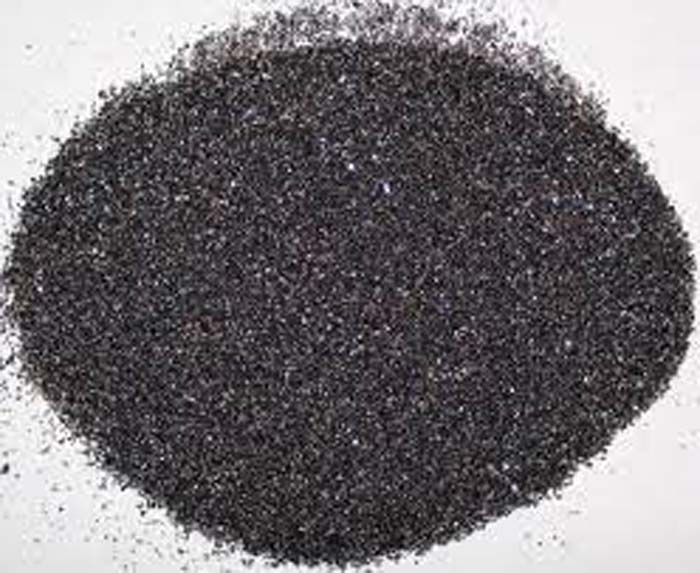
Water filtration is essential to ensure people have access to safe drinking water. The filtration process’s efficiency is highly dependent on the chosen filtration medium. Water filtration systems make use of a wide variety of materials, each of which is well-suited to remove specific pollutants due to its own set of characteristics. Some filtration mediums stand out among these materials. This is because of how well they work, how long they last, and how cheap they are.
Key Points:
- Understanding Filtration Mediums:
These materials or substances help filter water by removing pollutants and particles. Ceramic, gravel, sand, and activated carbon are some natural materials that can serve as these mediums.
How to Choose the Right Filtration Medium
There are a number of things to think about while deciding on the ideal filtration medium for water:
- Cost-effectiveness:
Budget for both initial investment and ongoing maintenance.
- A long lifespan:
Endurance and protection against degradation.
- Effectiveness
How well the filtration medium can filter out impurities.
- Effects on the environment:
Recyclability and environmental friendliness.
- Size of Pollutants
When dealing with particles of varying sizes, certain mediums perform better.
Types of water filter media
A variety of water filters rely on a water filtration medium. These are materials that help to remove pollutants and impurities from water. Each of the many media options for water filters has unique effectiveness and characteristics for removing specific pollutants. Here are a few typical kinds:
- Kinetic Degradation Fluxion
A very pure copper-zinc mixture removes scale, heavy metals, and chlorine from water through redox (oxidation-reduction) reactions and kinetic degradation fluxion.
- Sand
Sand filtration is a proven method that has endured over time. It uses mechanical filtration to efficiently remove larger particles from water, such as sediment and silt. Municipal water treatment plants and pools frequently use sand filters.
- Ion Exchange Resins
These filtration mediums interact with minerals and salts by exchanging ions in water. Their primary function is to neutralize the hardness-inducing magnesium and calcium ions frequently removed by water softeners. Ion-exchange resins easily remove additional pollutants like arsenic and nitrates.
- Granular Activated Carbon
Organic materials such as coconut shells and coal form the basis for granular activated carbon, which is chemically similar to activated carbon. Used in whole-house filtering systems and point-of-use filters, it has a bigger particle size than powdered activated carbon. It is also suitable for applications where a slower flow rate is acceptable.
- Zeolite
Natural or man-made, zeolite has a high surface area and a porous structure. Its absorption and ion exchange processes make it an efficient water purifier for some radioactive isotopes, ammonia, and some radioactive isotopes.
- Manganese Dioxide
Water filtration systems often make use of manganese dioxide as a means of removing iron, manganese, and hydrogen sulfide. The oxidation and filtration mechanisms are what make it function.
- Anthracite
The coal known as anthracite has a relatively low volatility and a high carbon content. Multi-media filters frequently use it as a filter medium to remove suspended particulate matter, turbidity, suspended solids, and other particulate materials from water.
- Ceramic Filters
Porous ceramic material makes ceramic filters so good for filtering out sediment, protozoa, and bacteria. They find widespread use in portable water filters and emergency filtering systems.
- Activated Carbon
Activated carbon, a porous material, efficiently treats water by removing VOCs, chlorine, organic compounds, and some heavy metals. The process relies on adsorption, in which contaminants cling to the carbon particles’ surfaces.
- Corosex and Calcite
These alkaline substances are poured into acidic water to neutralize acidity and boost pH. In contrast to corosex, derived from magnesium oxide, calcite comprises ground limestone.
There are many more kinds of water filtration mediums, each with its own properties and uses. The most suitable filtration medium is determined by the level of filtration required and the specific pollutants in the water.
Materials best for water filtration
Water filtration uses a wide variety of materials, each with its own unique applications and benefits. In terms of water filtration, some of the best materials are:
 Zeolite
Zeolite
One mineral that has the ability to absorb specific molecules and ions from water is zeolite. This is due to its porous nature and large surface area. People frequently use water softeners and other devices that remove ammonia from the water.
Sand
Sand filtration has existed for a long time, yet it still works well to filter water from big particles and suspended solids. Water treatment plants frequently use it in conjunction with other filtration methods.
Ion Exchange Resins
By exchanging charged ions within the resin for charged ions outside, ion-exchange resins can extract dissolved ions from water. Their removal of calcium and magnesium ions makes them ideal for water-softening applications.
Reverse Osmosis Membranes
These filtration mediums can filter out microbes, heavy metals, and dissolved salts, among other pollutants. Reverse osmosis systems are typically used to produce potable water and desalinate.
Ultrafiltration Membranes (UF)
UF membranes make it easy to remove contaminants from water, such as dissolved solids, viruses, and bacteria. These have smaller pore diameters compared to MF membranes. Numerous residential and commercial water treatment systems use them.
Activated Carbon
Because of its enormous surface area and high porosity, activated carbon is an excellent adsorbent for chlorine, organic compounds, and other water contaminants. Its most prevalent application is in the purification of potable water and home water filters.
Diatomaceous Earth
The sedimentary rock, known as D.E., is present in nature and has filtration properties. Because of its great porosity, it is able to filter out water contaminants and certain bacteria.
Ceramic Filters
These materials are great for purifying water because their small poles trap harmful protozoa, bacteria, and other pathogens. Emergency and outdoor drinking water purifiers are commonly used.
The specific pollutants in the water and the intended requirements for water quality determine the level of purification you can achieve using these materials alone or in combination.
How is filter media made?
The intended function and type of filtration dictate the material composition of the filtration medium. Here’s how a filtration medium might be created:
Choice of material
Picking the right material according to the filtering needs is the first step. Metal, activated carbon, polypropylene, paper, ceramic, polyester, fiberglass, and a variety of synthetic fibers are common materials.
Material preparation
The chosen material is processed in a certain way to achieve the target qualities. One potential example is the creation of a mesh or non-woven cloth from spun fibers. It is common practice to grind granular materials, such as activated carbon, to a precise shape and size before use.
Formation of media
The shape and structure of the filtration material are necessary. The material you intend to use dictates the specific techniques required, such as molding, knitting, weaving, or bonding. For example:
- Extrusion
Extrusion is the process of shaping materials into desired shapes to create filter media.
- Pleating
Pleating flat sheets of material increases their surface area.
- Woven media
Traditional weaving methods help to weave the fibers together.
- Non-woven media
Thermal bonding and needle punching are two methods that can entangle fibers.
Coating and treatment:
Depending on the application, coating or treating the filtration medium can enhance its filtration capabilities. For example:
- Surface treatments:
Chemical treatments can enhance the material’s resistance to moisture and chemicals, as well as its capacity to trap particles.
- Coatings
If you want your filter to work even better, you can add layers of activated carbon or some other chemical.
Sizing and cutting
The next step is to size and cut the filtration medium according to the specifications. The process may include molding the material into panels or cartridges or slicing it into smaller pieces from larger sheets or rolls.
- Quality control
The manufacturing process implements various quality control methods. This is to ensure that the filtration medium is up to par. This process may evaluate material properties such as filter effectiveness, porosity, and strength.
- Packaging
Filter media is packaged in cartridges, sheets, rolls, or any other form that best suits its intended application before shipment or further filter incorporation.
The material, the application, and the desired performance characteristics of the final product are some of the many variables that can significantly impact the specific manufacturing method for the filtration medium.
Materials used to manufacture filters
The exact application and type of filter dictate the range of materials used to create filters. The following are some of the typical materials used in filter production:
Nylon
The durability and resilience of nylon filters to chemicals are well known. Lab applications frequently use nylon filters to filter aggressive chemicals.
Cellulose Acetate
Laboratory settings commonly use cellulose acetate filters to filter medications and biological materials due to their poor protein binding capabilities.
Ceramic
Ceramic filters can be used for molten metal filtering and water purification. They are well known for their great chemical and thermal resistance.
Polypropylene
These have multiple uses because of their chemical resistance. These are commonly used in medical devices, food processing, and water filtration.
Fiberglass
Industrial heating and air conditioning systems frequently make use of fiberglass filters. They are popular because they catch tiny particles with excellent efficiency.
Metal Mesh
Stainless steel and other metal mesh filters are reusable and long-lasting. For instance, industries and vehicles use filtration systems due to their ability to withstand high temperatures and other extreme operating conditions.
Activated Carbon
Activated carbon filters effectively remove VOCs, gases, and odors. Water filters usually use activated carbon.
Silica Gel
Silica gel filters absorb humidity and moisture to protect packaging, electronics, and air conditioning systems from degradation and corrosion.
Paper
Coffee and car air filters are two examples of the many commonplace uses for paper filters. They work well as filters for certain particles, and they don’t cost a fortune.
Polyester
These are ideal for use in cleanrooms and industrial filtration due to their long lifespan and resistance to high temperatures.
Filter manufacturing uses a wide variety of specialty materials and combinations, depending on the specific requirements of the filtration application.
Applications and considerations:
The water source, contaminants, desired flow rate, and available funds all play a role in determining the filtration medium best suited for a given system. The availability of replacement parts and the frequency of maintenance.
Conclusion:
Choosing the best filtration medium for filtering water is essential to guarantee safe drinking water delivery. Environmental impact, durability, effectiveness, and cost are just a few criteria that need consideration when deciding on a filtration medium. By understanding these elements and taking into account the specific needs of the water source, we can implement optimal filtering systems to achieve the appropriate water quality standards.
